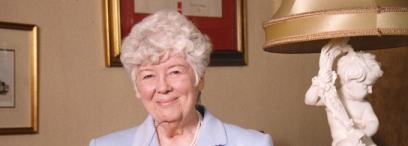On 16 March 1914 the Usher Hall in Edinburgh was opened to the public. It was a building which had been designed and built to provide the citizens and visitors to Edinburgh with a dedicated home for good music and entertainment. It is unlikely that this building would ever have come to exist, however, had it not been for a man called Andrew Usher.
Andrew was born on 5th January 1826, the son of a whisky distiller of the same name. His father had spent much of his career experimenting with blending highland malts to improve the quality and taste; Andrew had a particular talent for this, and he became one of the partners in Andrew Usher & Company. Andrew helped to promote the popularity of the drink across the world and became one of the three founders of the North British Distillery. Through this, he became a wealthy man and, according to the Usher Hall website he wished to build a new music hall which, in his words, would ‘become and remain a centre and attraction to musical artistes and performers and citizens of Edinburgh and others who may desire to hear good music.’
In 1896 Andrew donated £100,000 specifically for the construction of such a hall ‘without delay’. Unfortunately for Andrew he never saw his dream become reality; there were many issues in determining the correct location for the hall, and he died in 1898 aged 72.
An architectural competition for the design of the hall was launched in 1910. The successful architects were Stockdale Harrison and Howard H Thomson with a Beaux-Arts design. The Edinburgh sculptor Harry Gamley was responsible for the interior decorative plaster panels which depict figures from the world of music, as well as notable Scots.
Construction work was delayed for the visit of King George V and Queen Mary on 19 July 1911 to lay two memorial stones which held a lead casket containing all the coins of the realm, a copy of the Lord Chaimberlain’s accounts, a copy of the Scotsman and Edinburgh Evening News, a list of city officials and town council members and a copy of Andrew Usher’s deed of gift.
The Usher Hall opened on 16 March 1914. The Scotsman was full of praise: ‘It is not too much to say that those present, who saw the hall for the first time, were greatly struck with its dignified proportions, its open and airy aspect, and the character of its decorative detail.’ Only 4 months after the opening of the Usher Hall, World War One began. The new hall was used as a centre to recruit soldiers, including MacCrae’s battalion, the 16th Royal Scots, whose recruitment was initiated in it. The hall also hosted musical events to raise money during the conflict, to go towards the war effort.
The valuation roll for the Burgh of Edinburgh 1915-1916 features the newly opened hall. Between a public house at number 65 Lothian Road and a shop at number 71 is a property described simply as a ‘hall’. The proprietor details provide a clue to the origins of the building: ‘The Corporation of the City of Edinburgh for Andrew Usher’s donation’.

Valuation roll listing the Usher Hall in 1915.
National Records of Scotland, VR100/321
The yearly rental/rateable value column of the roll indicates the relative grandeur of this building in comparison to its neighbours. Whereas the public house is valued at £240 and the shop at £205, the Usher Hall is £1500.
For more information about these records please see our guide on valuation rolls.


